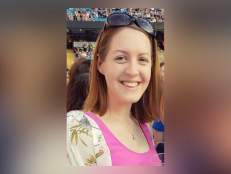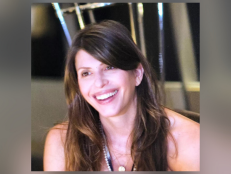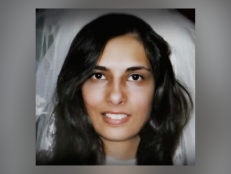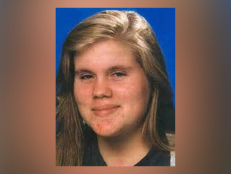‘Killer Nanny’ Or Wrongly Accused: Did Louise Woodward Get Away With Murdering An Infant In Her Care?
“I am innocent. I have done nothing wrong,” the former au pair insisted after she was released from prison.

Warner Bros. Discovery, Inc. (Screenshot from ID's "The Killer Nanny")
Over 25 years ago, a British teenager arrived in the United States to work as an au pair. Shortly after, a baby in her care died and she went on trial, sparking an international debate over whether or not she should be behind bars.
In November 1996, Woodward, who was from Elton, Cheshire, England, went to live in Newton, Massachusetts, with doctors Sunil and Deborah Eappen and take care of their 8-month-old son, Matthew.
Around 10 weeks later, on Feb. 4, 1997, Woodward, then 18, phoned 911 to report the infant wasn’t breathing. Emergency responders rushed the baby to Boston Children’s Hospital, and he was placed on life support.
A short time later, Woodward was arrested on suspicion of child abuse. The charges against her were upgraded to murder after Matthew slipped into a coma and passed away.
The case became an immediate media sensation and the press dubbed Woodward the “Killer Nanny.”
At trial, experts claimed Matthew’s injuries, including a cracked skull and subdural hematoma, proved he was the victim of Shaken Baby Syndrome, now often referred to as abusive head trauma.
The syndrome’s symptoms, known as the triad, include brain swelling, bleeding on the surface as well as behind the eyes. Witnesses for the prosecution claimed the baby exhibited the symptoms, which, they said, proved Woodward was guilty.
The defense, however, argued brain scans showed the baby boy had suffered a hairline fracture that predated Woodward coming to care for the baby and shaking him even “lightly” could have caused the existing injury to become deadly. Her attorneys also pointed out there was no issue with Matthew's neck, a classic telltale sign of a child who is the victim of Shaken Baby Syndrome.
The jury ultimately sided with the prosecution, and Woodward was convicted of second-degree murder. In 1997, she received a sentence of 15 years to life.
The judge on the case, however, said Woodward’s conviction was an injustice and he overturned it, downgrading the verdict against Woodward to involuntary manslaughter.
The teenager’s sentence was reduced to time served, or less than 300 days behind bars, and she was released.
The case continues to be debated to this day, with some believing Woodward got away with murder and others insisting she was wrongly accused.
Dr. Patrick Barnes, a neuroradiologist who was a key witness for the prosecution, told The New York Times that at the time of Woodward’s trial he “was adamant that it had to be child abuse, shaken baby syndrome” but he has since reconsidered his stance and now believes baby Matthew’s injuries “could have been accidental.”
A host of other factors, Barnes noted, could cause the triad of symptoms often associated with SBS, such as previous injuries or infections.
While the doctor believes “we have to do our duty to protect children,” he said “there is no doubt that errors have been made and injustices have resulted.”
Today, Woodward lives in England and is a mother.
“I know there are some people waiting for me to have a baby so they can say nasty things,” she once said before becoming pregnant with her first child. “It upsets me, but that is not going to stop me leading my life. I am innocent. I have done nothing wrong.”
For more on this case, stream The Killer Nanny on Max.
![Holly Clouse as a baby [left] and Holly Clouse now at 42 years old [right].](http://investigationdiscovery.sndimg.com/content/dam/images/investigationdiscovery/crimefeed/legacy/2022/06/NCMEC-holly-clouse-06102022.png.rend.hgtvcom.231.174.suffix/1654876785793.png)
![Nancy Anderson, 19, [main] was stabbed to death on Jan. 7, 1972. 50 years later, Tudor Chirila Jr. [inset] has now been arrested for her murder.](http://investigationdiscovery.sndimg.com/content/dam/images/investigationdiscovery/crimefeed/legacy/2022/09/washoe-county-jail-tudor-chirila-jr-honolulu-police-department-nancy-anderson-09202022.png.rend.hgtvcom.231.174.suffix/1663700815993.png)
![Sarah Said [left] and Amina Said [right] smile for a photo [main]; Yaser Said in an FBI-provided photo [inset]](http://investigationdiscovery.sndimg.com/content/dam/images/investigationdiscovery/crimefeed/legacy/2022/08/devil-in-suburbia-S1-E5-under-his-eye-fbi-yaser-said-083022.png.rend.hgtvcom.231.174.suffix/1661887214304.png)

![Natalee Holloway [main photo] disappeared on her senior class trip to Aruba in May 2005. Now, Joran van der Sloot [inset] finally confessed to her murder.](http://investigationdiscovery.sndimg.com/content/dam/images/investigationdiscovery/crimefeed/legacy/2023/10/fbi-natalee-holloway-102423-AP-joran-van-der-sloot-100604119865.png.rend.hgtvcom.231.174.suffix/1698172052978.png)




![Christina King [left] and Sameemah Mussawir [right] were identified as victims of the same killer by the Kansas City, Kansas Police Department’s cold case unit.](http://investigationdiscovery.sndimg.com/content/dam/images/investigationdiscovery/crimefeed/legacy/2023/09/kansas-city-police-department-christina-king-sameemah-mussawir-92623.png.rend.hgtvcom.231.174.suffix/1695741317459.png)